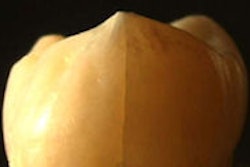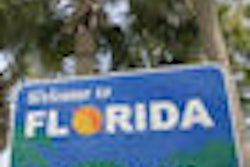At a congressional hearing today in Washington, DC, U.S. legislators were urged to press the U.S. Department of Veterans Affairs (VA) to immediately expand use of Zila's ViziLite Plus, the FDA-cleared technology for the early detection of oral abnormalities that could lead to cancer, the company announced.
David Bethune, chairman and CEO of Zila, the developer and marketer of ViziLite Plus, addressed the issue in testimony before the House Committee on Veterans' Affairs.
Noting that veterans are at dramatically higher risk for oral cancer due to their higher rates of smoking, chewing tobacco, and drinking, Bethune said the VA should "immediately implement annual ViziLite Plus oral cancer screening of all veterans who are seen at VA facilities nationwide. This is the best way to ensure the consistent delivery of quality lifesaving care to our veterans."
Oral cancer kills one American every hour, but veterans are 2.8 times more likely to get oral cancer than the general public, according to Zila.
"The VA currently diagnoses roughly 5% of all the nation's oral cancers, but 70% of the time the cancer is at late stage, when the five-year survival rate is just 26%," Bethune noted. "The key to survival is early detection and, even better, detection of precancerous tissue."
Zila has contracted to provide ViziLite Plus to the VA at a steep discount, but Bethune told the committee that individual VA facilities have "dragged their heels" on performing the three-minute, painless ViziLite exam. He told the congressional panel that screening all 5.5 million veterans who access VA facilities yearly would cost about $60 million, "a sum that would be easily recouped by the reduction in surgeries, long-term care, suffering, and death."
Bethune pointed to a Delta Dental analysis showing that treatment of late-stage oral cancer typically exceeds $200,000 per patient, while treatment of precancerous lesions costs only $500 to $1,500. "For patients, early detection means a faster return to the workplace, which reduces lost wages and improves productivity," he noted.
Also testifying today was David Sidransky, M.D., director of the head and neck cancer research division at Johns Hopkins University School of Medicine and professor of oncology, otolaryngology-head and neck surgery, and cellular and molecular medicine at Johns Hopkins University and Hospital.
Dr. Sidransky told the committee that worldwide research shows that visual examination by untrained examiners often misses the earliest, more curable lesions. "By contrast, published studies reporting sensitivity values for ViziLite are consistent. To date, the sensitivity of ViziLite examination in identifying dysplasia and cancer is reported as 100%."
Two additional dental authorities were present and filed statements with the committee.
Joel Epstein, D.M.D., director of the interdisciplinary program in oral cancer biology, prevention, and treatment at the University of Illinois College of Medicine, Chicago Cancer Center, noted that "healthcare providers have been and continue to be challenged with identifying abnormal oral conditions, which may represent premalignant and malignant disease. Until recently we have had to rely solely on visual examination. The result has been that the majority of oral cancer is not diagnosed until symptomatic and with advanced stage of disease, when extensive treatment is required and prognosis is guarded."
William Balanoff, D.D.S., a Fort Lauderdale, FL, dentist and frequent dental lecturer, advised the committee that ViziLite Plus is technically a screening adjunct, like several other well-known technologies. "Cancer death rates from prostate, breast, and cervical cancer did not begin to show substantive decreases until adjunctive screening technology allowed physicians to see or feel things they could not see or feel with their unaided eyes or hands. Mammograms, Pap smears, and PSA [prostate-specific antigen] tests have reduced death rates by 40%, 80%, and 17%, respectively," he said.
Copyright © 2009 DrBicuspid.com



















